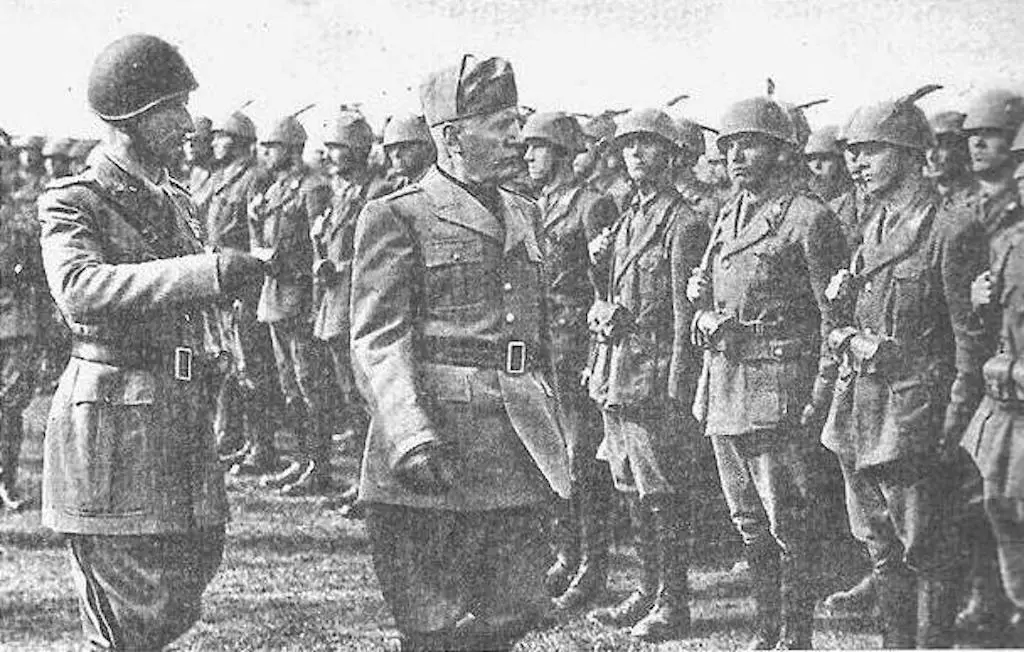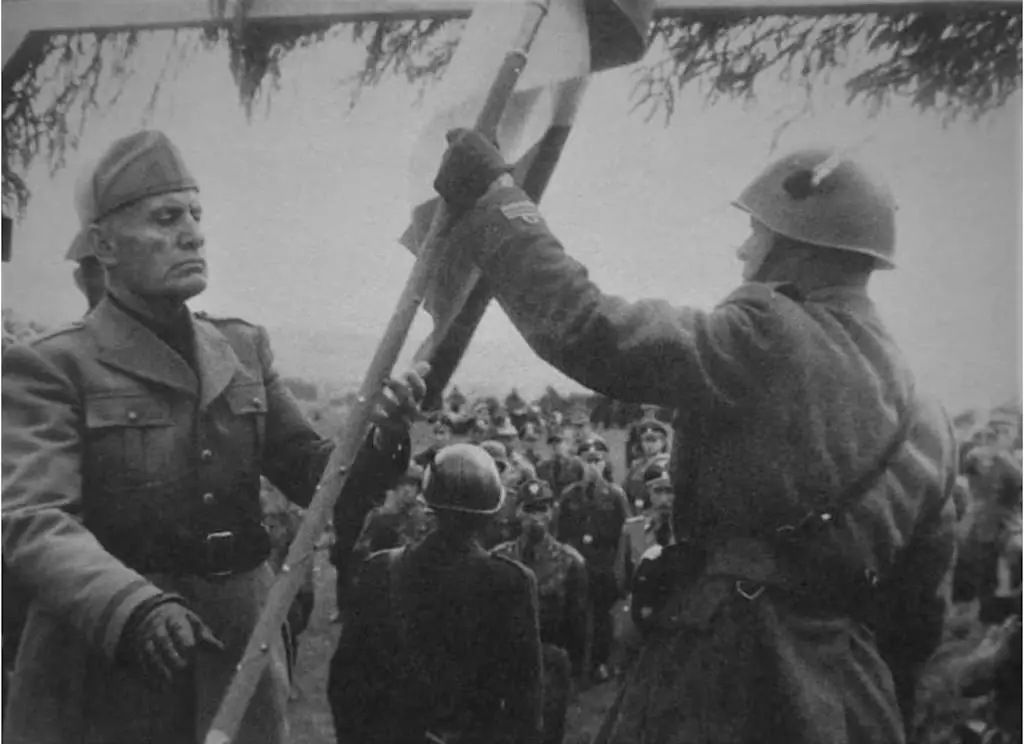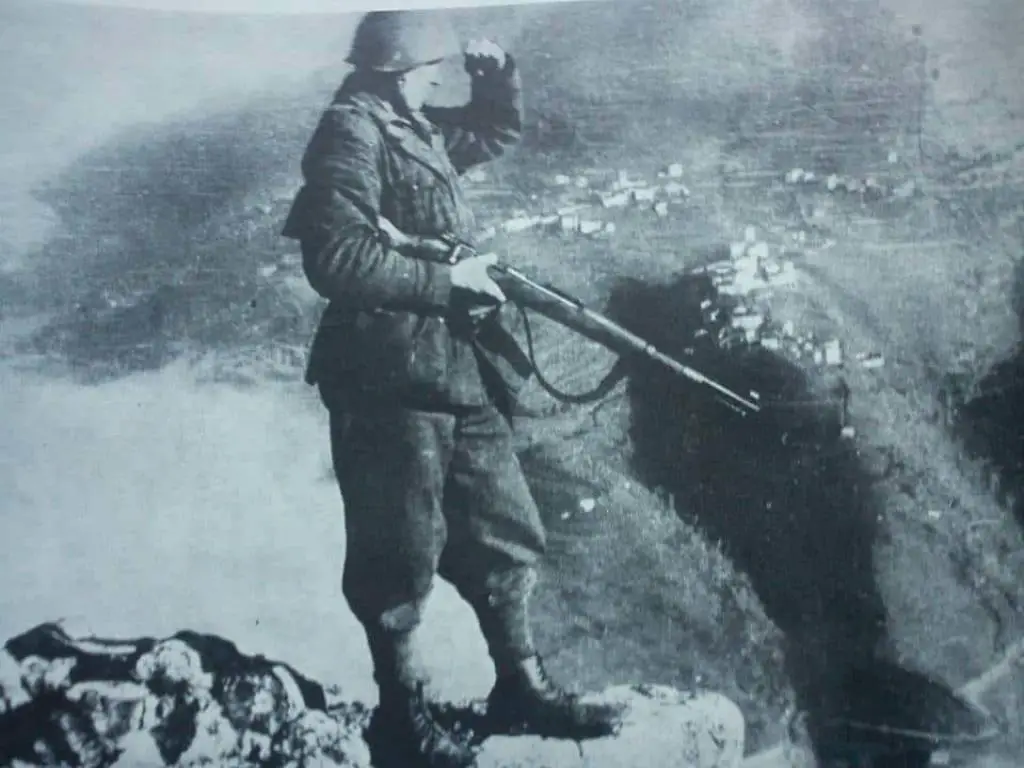Background on the Monterosa Division
The signing of the Rastenburg Protocol on 16 October 1943 permitted the Italian Social Republic to raise four Italian divisions totaling 52,000 men. The Monterosa Alpine Division became the first divisional unit of the new Italian National Republican Army.
Related: Italian Social Republic: German Puppet State in Northern Italy
Approximately 19% of the Monterosa Division included former Italian Royal Army soldiers captured by the Germans following the Italian armistice. These soldiers were released and allowed to join the Republican Army if they showed pro-Fascist or anti-Allied sentiment. New draftees made up the other 89%.
Training
The training activity in the German training grounds of Münsingen and Heuberg began in December 1943 and ended in July 1944. Upon completion of training, the Monterosa Division returned to the Italian theater. Although officially an Alpine unit, Monterosa troops never received mountain warfare training. Nonetheless, they received intensive and demanding training under the best German tradition.

General Mario Carloni (L), Commander of the Monterosa Division reviews his troops with Benito Mussolini at the Münsingen training grounds.
A Well Equipped Division
Mussolini reviewed the four divisions in Germany before their departure for Italy. The Monterosa Division, under General Mario Carloni, was at full strength, well trained, reasonably well equipped and eager for fighting. It had two infantry regiments. The 1st Alpine under Commanding Officer Colonel A. Farinacci; 2nd Alpine, under Commanding Officer Colonel Manfredini and an artillery regiment, the 1st, under Commanding Officer Lt. Col. Binda. The division had support and service units, including 30 women auxiliaries, 1,500 automatic rifles, 1,000 machineguns (mostly German MG 42s), (50) 80 mm mortars, (36) 75/13 mm howitzers, (12) 105/17 mm howitzers, (3) 75/27 mm field guns, (21) 75 mm infantry guns, (12) 75/40 PAK anti-tank guns, 36 Panzerschreck anti-tank rocket launchers, 144 Panzerfaust anti-tank weapons, (12) 20 mm anti-aircraft guns, 24 flamethrowers, and 6 armored cars.

Benito Mussolini delivers the Combat Flags to the Monterosa Alpine Division Battalions on 16 July 1944.
All in all, on paper it was probably the most powerful Italian infantry division ever. The artillery pieces, with the exception of the German 75/40 PAKs, were obsolete. However, they could still be effective in a mountain environment.
Desertions and Low Morale
From July to October of 1944, the Monterosa was part of the so-called “Liguria Army” (in North-western Italy) under Marshal Graziani. While employed in static and anti-partisan duties, soldier’s morale rapidly dropped. Desertions became commonplace and a cause for embarrassment for the Republican Army. One entire replacement battalion, the Vestone, simply melted away. The Germans mistrusted the Republican Army troops and often refused to give them much needed weapons and equipment. Additionally, most Italian civilians ignored or despised the Republican Divisions.

A Monterosa lookout on a mountaintop near Genoa.
As the civil war in Italy continued, Partisans would ambush Republican Army elements from all sides. Cold-blooded murders became frequent. This cumulated into many desertions by Republican Army soldiers. However, after the Monterosa units arrived at the Gothic Line in October, the desertion rate significantly dropped and no longer considered a problem.
A Note About Desertion
Italian and foreign writers alike always stress the high Republican desertion rate. But it’s worth remembering that up until late 1944, desertion rates among pro-Allied Italian troops was also significant. But the phenomenon wasn’t just Italian. The well equipped and trained British 56th Infantry Division recorded 350 deserters in two weeks following the Battle of the Bernhardt Line. Also, the British 46th Infantry Division noted 1,059 deserters during the Italian campaign. That is to say, 1 out of 14 men.
Battle of Garfagnana (Operation Wintergewitter)
Nearly half of the Monterosa Division arrived at the Garfagnana front and formed the “Fretter-Pico Group” with the German 148th Infantry Division. It successfully took part in Operation Wintergewitter, while the other half of the Division continued its garrison duties.
You Might Like: Battle of Garfagnana: Operation Winter Storm.
Monterosa Division in Final Weeks of World War Two
In February 1945, the Italia Division replaced the Monterosa Division on the Apennines front, and the latter unit transferred to Piedmont. However, engineers, the Intra battalion and some artillery remained at the Gothic Line until the very last days of the war. In Piedmont, the Monterosa continued conducting exhausting anti-partisan and garrison duties until the end of the war.
In the frightful days and weeks leading up to the end of hostilities in Europe, many Partisans would murder surrendering Monterosa soldiers and officers.
[wpsm_video schema=”yes” title =”” description =”Italian troops in German training camps in 1944.”]https://youtu.be/qVqhjNtb4Ro[/wpsm_video]
Article provided courtesy Alessandro Gazzi.